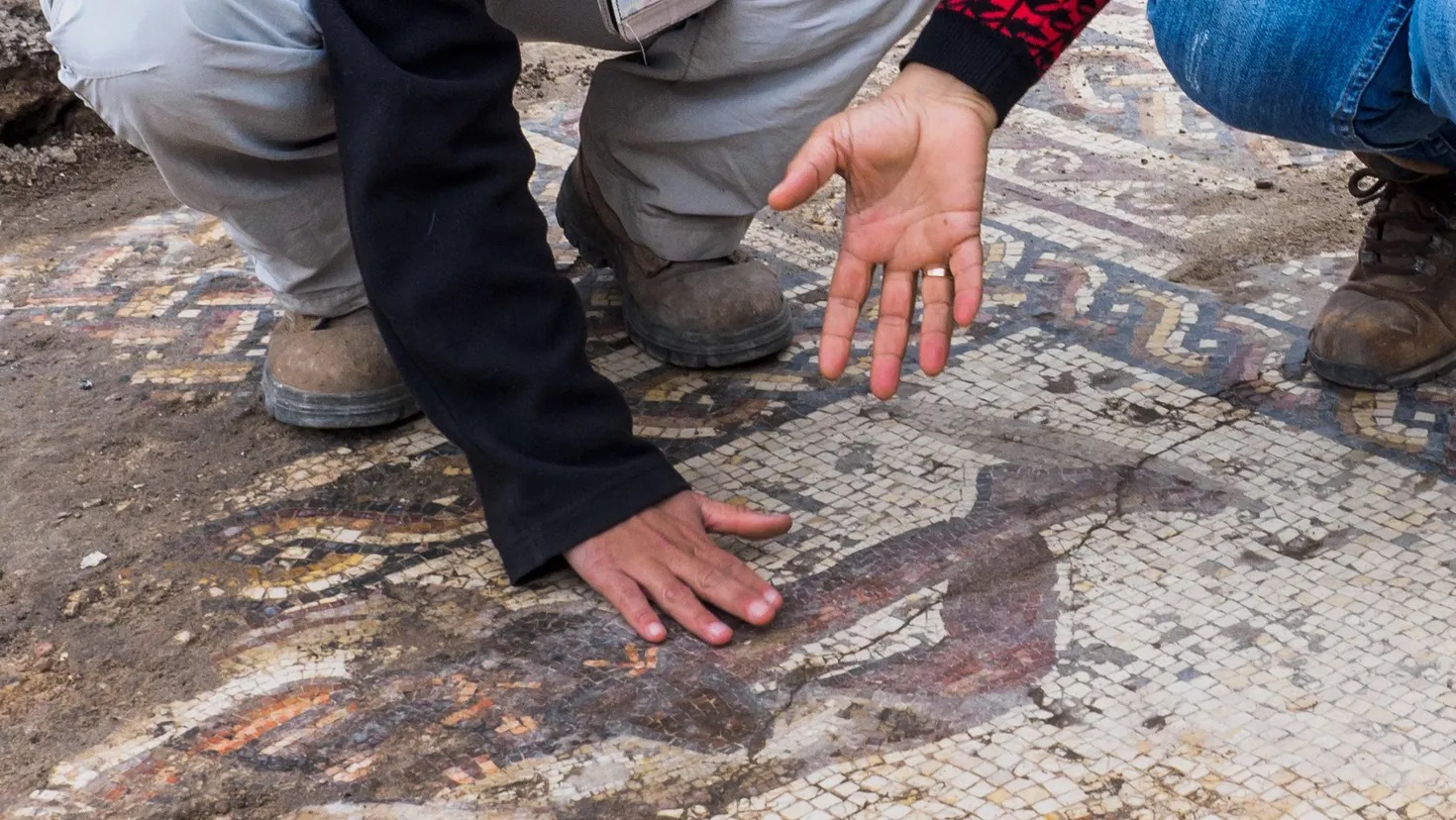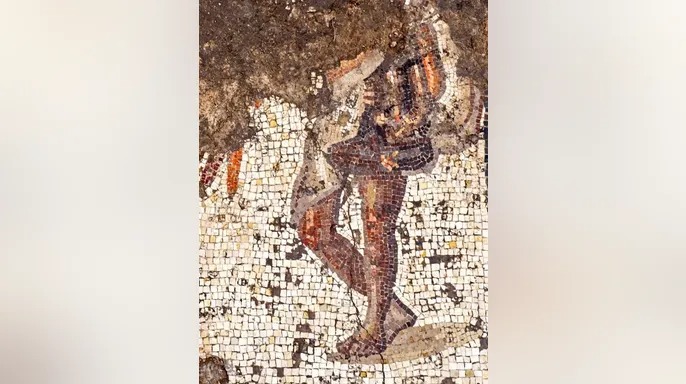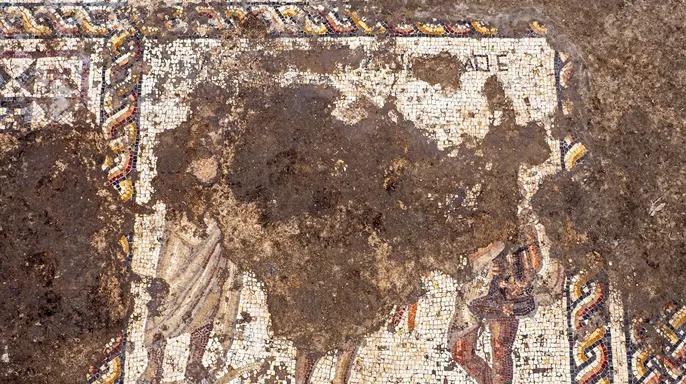
Archaeologists in Israel have uncovered a rare multicolored Roman mosaic featuring three toga-wearing figures during excavations in the ancient city of Caesarea.
The mosaic, which dates back to the 2nd or 3rd-century A.D, measures around 11.5 feet by 26 feet. “It features three figures, multicolored geometric patterns and a long inscription in Greek,” explained Dr. Peter Gendelman and Dr. Uzi ‘Ad, excavation directors for the Israel Antiquities Authority, in a statement. “The figures, all males, wear togas and apparently belonged to the upper class. The central figure is frontal and the two other face him on either side.”
The mosaic has been damaged by a building that was constructed on top of it during the Byzantine period about 1,500 years ago. The identity of the figures also remains a mystery. “If the mosaic was part of a mansion, the figures may have been the owners,” explained the archaeologists, in the statement. “If this was a public building, they might have represented the donors of the mosaic or members of the city council.”

The images on the mosaic were depicted using tiny cubes of stone and brick called tesserae. The mosaic contains about 12,000 tesserae per square meter (3.3 feet by 3.3 feet) according to Jacques Nagar, head of the Israel Antiquities Authority Art Conservation Department.
The dig, which is receiving financial support from the Edmond de Rothschild Foundation and the Caesarea Development Corporation, is part of the largest conservation and construction project ever undertaken in Israel. This involves reconstruction work on the Crusader-era entrance bridge to Caesarea and the construction of a promenade from the nearby town of Jisr a-Zarqa to Caesarea National Park. As part of the project, archaeologists have also unearthed a large, opulent building that dates back to the Byzantine period. The Roman mosaic was discovered beneath the building.
The mosaic is just the latest in a series of impressive archaeological finds in Israel. Researchers, for example, recently announced the discovery of a mysterious 1,500-year-old pool and elaborate fountain at the site of an ancient church near Jerusalem.
Archaeologists also recently uncovered a stunning 1,500-year-old Christian mosaic that was once the floor of a church or monastery in the ancient coastal city of Ashdod-Yam.

In a major discovery last year archaeologists in Jerusalem uncovered a new section of the Western Wall that has been hidden for 1,700 years.
Also in 2017 an ancient Greek inscription was found on a 1,500-year-old mosaic floor near the Damascus Gate in the Old City of Jerusalem.
Experts also believe they have found the lost Roman city of Julias, formerly the village of Bethsaida, which was the home of Jesus’ apostles Peter, Andrew and Philip.

Leave a Reply